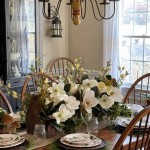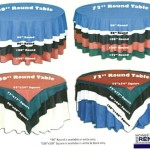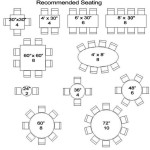The Importance of Table Setting
Table setting is an often overlooked aspect of dining, yet it plays a crucial role in creating a positive dining experience. Beyond the practical function of providing utensils and plates, a carefully set table adds a sense of formality, enhances the ambiance, and communicates respect and attention to detail. By understanding the principles of table setting, individuals can elevate their dining experiences and create a more enjoyable and memorable occasion.
Elevating the Dining Experience
A well-set table transforms a simple meal into a more refined and special occasion. The visual appeal of a beautifully arranged table setting stimulates the senses and creates an air of anticipation for the meal to come. The placement of each element, from the tablecloth to the napkins, contributes to the overall aesthetic and sets the tone for the gathering. Furthermore, the act of setting the table itself can be a meditative and enjoyable process, allowing the host to focus on creating a pleasing and inviting environment for their guests.
Communicating Respect and Attention to Detail
Table setting goes beyond aesthetics; it also conveys a message of respect and consideration for the guests. When effort is invested in creating a meticulously set table, it signals to the guests that they are valued and that their comfort and enjoyment are a priority. This thoughtful gesture can foster a sense of appreciation and gratitude, enhancing the overall feeling of connection and warmth during the meal. The attention to detail showcased in the table setting extends to the entire dining experience, demonstrating that the host has put care and thought into the preparation and execution of the meal.
Enhancing Ambiance and Establishing a Tone
The table setting plays a significant role in shaping the ambiance and tone of the dining experience. Whether it is an intimate dinner for two or a grand gathering, the choice of tableware, linens, and decorative elements can influence the mood and atmosphere of the occasion. A formal table setting with crystal glasses, fine china, and intricate silverware can create an elegant and sophisticated ambiance, while a more relaxed setting with casual tableware and rustic linens can foster a warm and inviting atmosphere. The table setting can also subtly reflect the theme or style of the event, whether it be a celebratory dinner, a casual family gathering, or a themed party. By carefully selecting the appropriate elements, hosts can create a dining experience that aligns with the desired mood and atmosphere.
Types of Table Settings
The specific elements included in a table setting will vary depending on the occasion and formality of the event. Here are some common types of table settings:
- Formal Table Setting: Characterized by the use of fine china, crystal glasses, and silver or sterling silverware. This setting is typically reserved for special occasions such as weddings, formal dinners, and state functions. Elements include a charger plate, soup bowl, bread and butter plate, salad fork, dinner fork, dinner knife, soup spoon, dessert fork, dessert spoon, water glass, wine glass, and a napkin.
- Informal Table Setting: A more casual setting that uses everyday tableware, such as stoneware plates, glassware, and stainless steel silverware. This setting is suitable for everyday meals, family gatherings, and casual events. Elements include a dinner plate, salad fork, dinner fork, dinner knife, a teaspoon, a water glass, and a napkin.
- Buffet Table Setting: This setting is designed for self-service meals, where guests choose their food from a buffet table. It typically includes a serving plate, napkins, and flatware for the main course.
Regardless of the type of table setting, the basic principles remain consistent. The placement of each element should be logical and accessible to the guest, ensuring a comfortable and enjoyable dining experience.

Table Settings Etiquette And Inspiration For Entertaining

Setting A Table For The Holidays Designers Share Their Secrets New York Times

Goal Setting In Spirituality

Setting A Table For The Holidays Designers Share Their Secrets New York Times

The Formal Place Setting Emily Post

Setting A Table For The Holidays Designers Share Their Secrets New York Times

Table Setting Diagrams Formal Fine Casual More Set Ups

Table Setting Diagrams Formal Fine Casual More Set Ups

Setting A Table For The Holidays Designers Share Their Secrets New York Times
Part 1 Using The 4 Goal Setsing Principles Table Chegg Com
Related Posts








